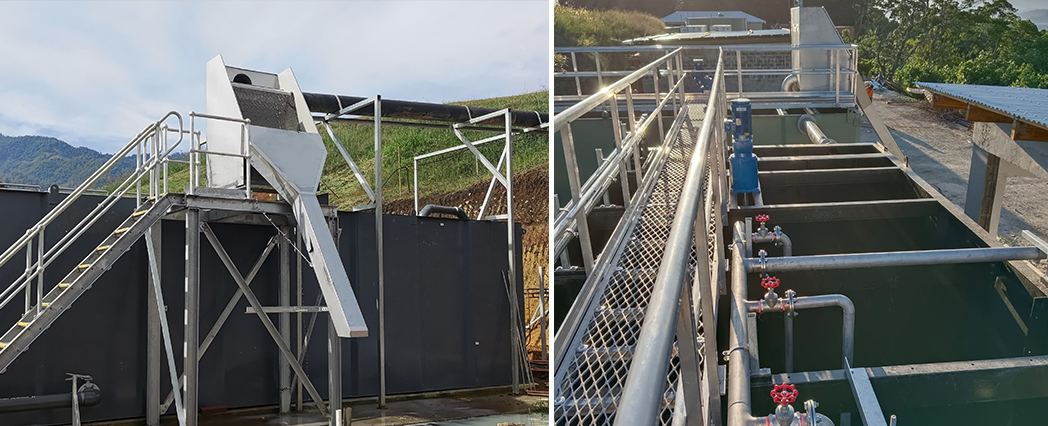Securing Operation of a Remote Hospital Site, PNG
Hydroflux Epco supports sustainable healthcare in remote Papa New Guinea site in the rainforest of Enga. The objective of this project was to treat the hospital wastewater to a standard that will protect villagers and the environment downstream of the intensive medical facility.
The Hydroflux Epco solution was designed as a complete turnkey solution to reduce environmental impact and be scalable to allow for growth in the hospital capacity as future development of the site continues.

From a technical perspective the sewage treatment plant process flow consists of:
- Screening
- Balance Tank
- MBBR Biological Reactor
- Secondary Clarification with Lamella
- Sand Filtration with Backwash
- Carbon Filtration with Backwash
- UV Disinfection
- Ozone Treatment
- Chlorination
- Odour Filtration
- Sludge Handling
Flow is screened through a static screen for solids removal which gravitates into the equalization tank that buffers the hydraulic and concentration peaks.
The biological stage of the treatment plant is based on the highly proven and reliable MBBR (Moving Bed Biofilm Reactor) technology. The high surface area of the biomedia used helped in significantly reducing the footprint of the treatment plant as compared to other conventional technologies. The MBBR process is easy to operate because it is insensitive to shock loads and spikes in flow variation.
The MBBR discharge is clarified using an inclined plate settler followed by sand and activated carbon filtration. Both the filters are automatically backwashed with the discharge directed back to the equalisation tank.
Due to the remote location of the treatment plant, the sludge on the campus is dewatered on the campus by means of sludge drying beds and sent for further composting and reforestation of the local jungle.
The disinfection is three-fold due to the presence of pharmaceutical compounds. The filtered water is subject to UV disinfection which is stored in short retention storage tank and then treated with ozone and with chlorine via a tablet dispense before being sent to the final storage tank.
The odour is removed by activated carbon based passive vent filter. This system is purely intended to significantly reduce the potential of smells reaching the hospital or nearby neighbouring properties.
The entire sequence of operation is automatically controlled by means of a central control system housed in a container.
This project has succeeded in capitalising on combining one of the leading technologies available for wastewater treatment and use of the local fabricators in PNG for the tanks used in the treatment plant. The installation was done during the covid pandemic period and involved use of local talent for installation.
| Item | Value |
| Capacity | 1000 EP |
| Process | MBBR – Moving Bed Bio Film Reactor |
| Flow | 250 m3/d |
| Design Configuration | Prefabricated Container |
| Year | 2020 |


